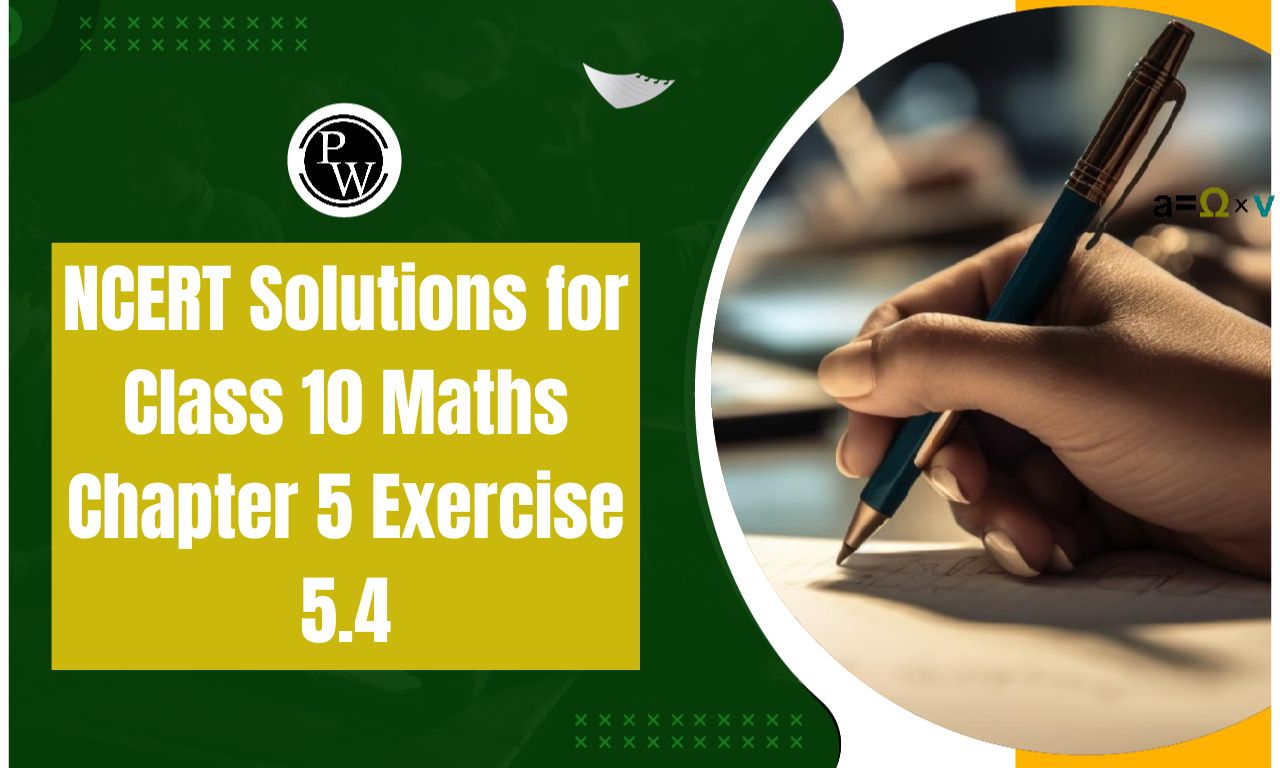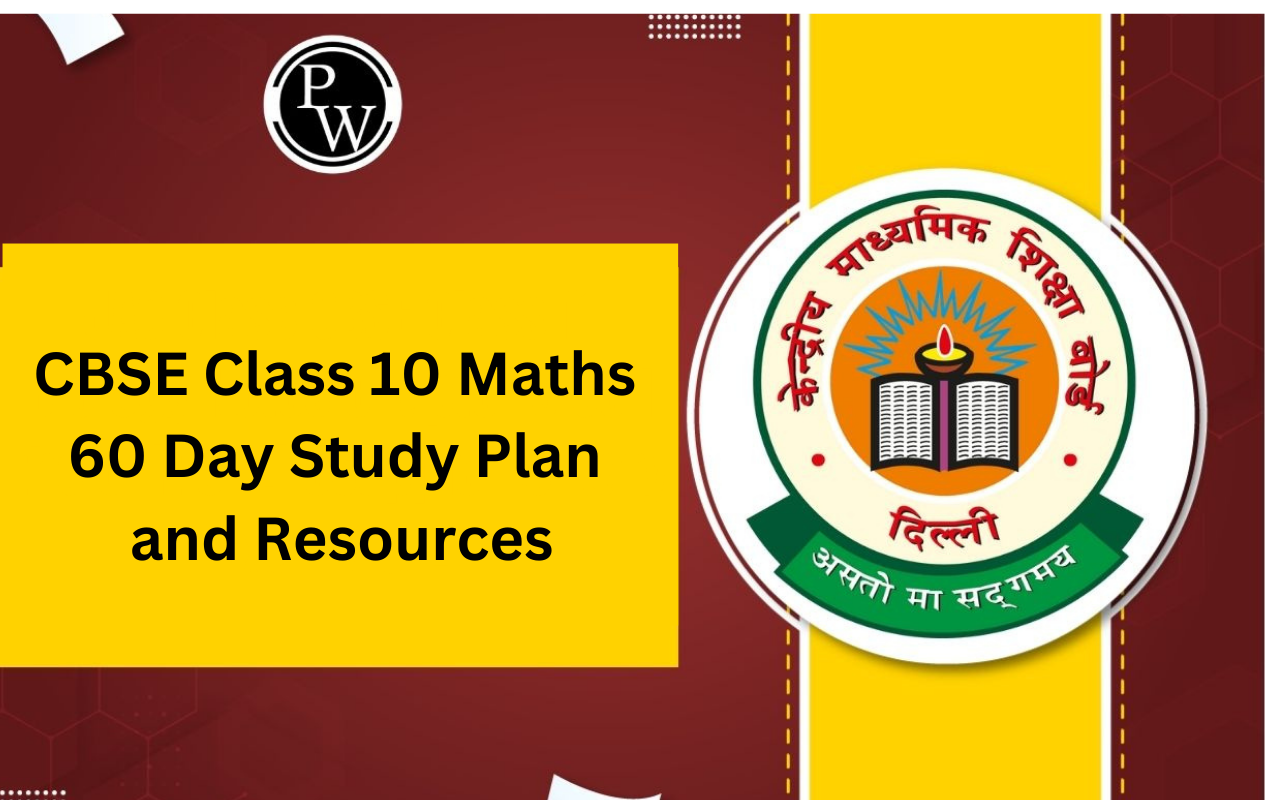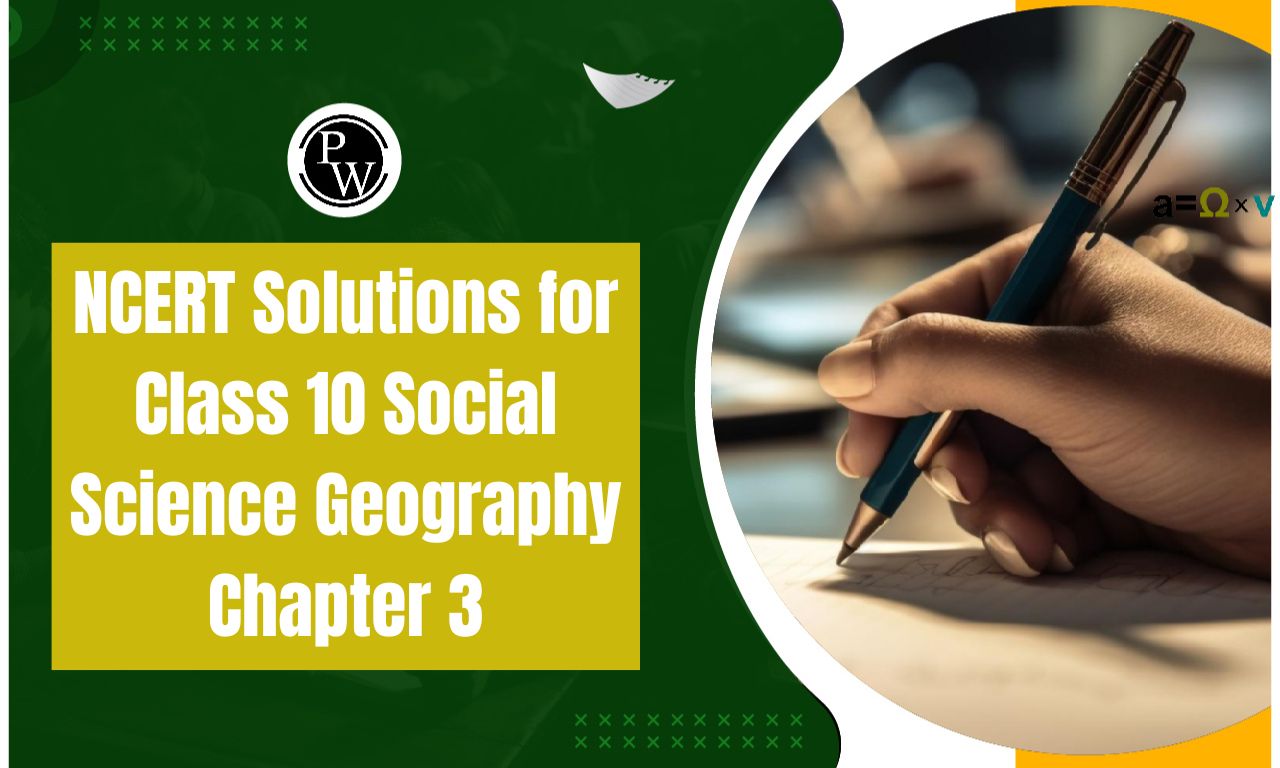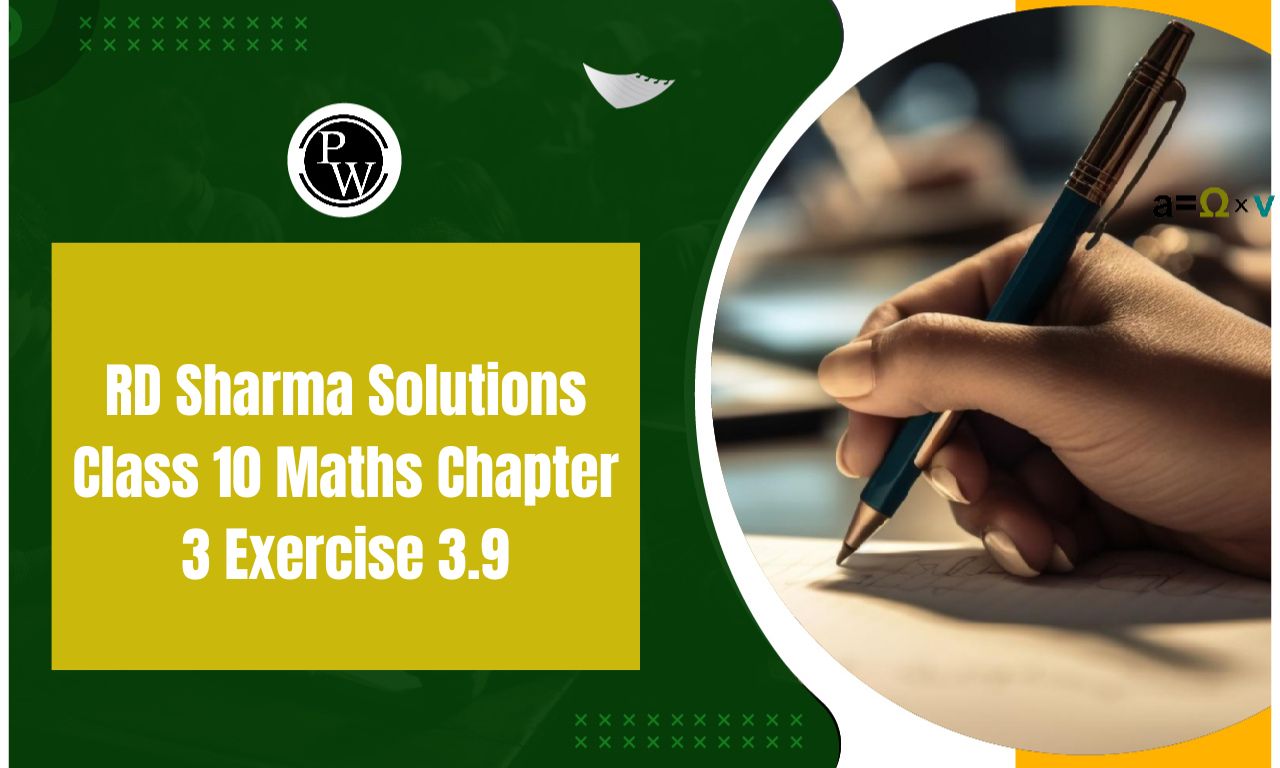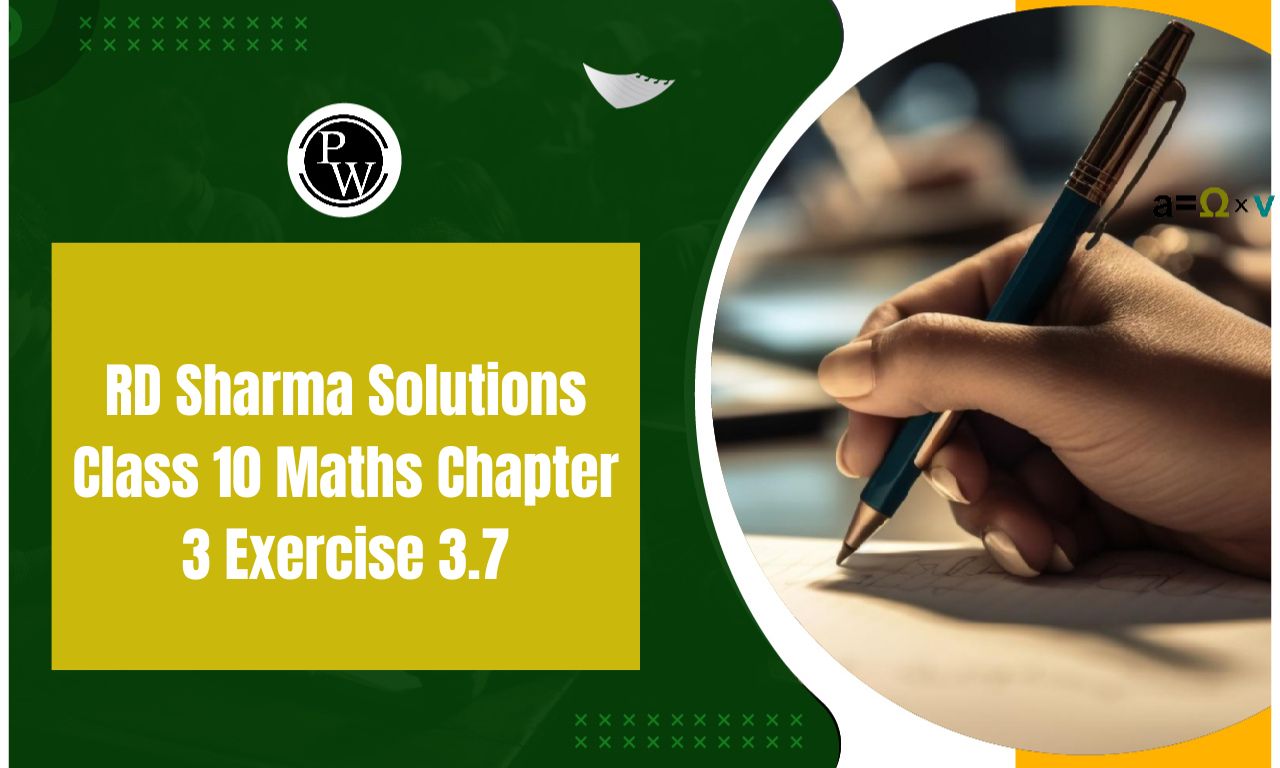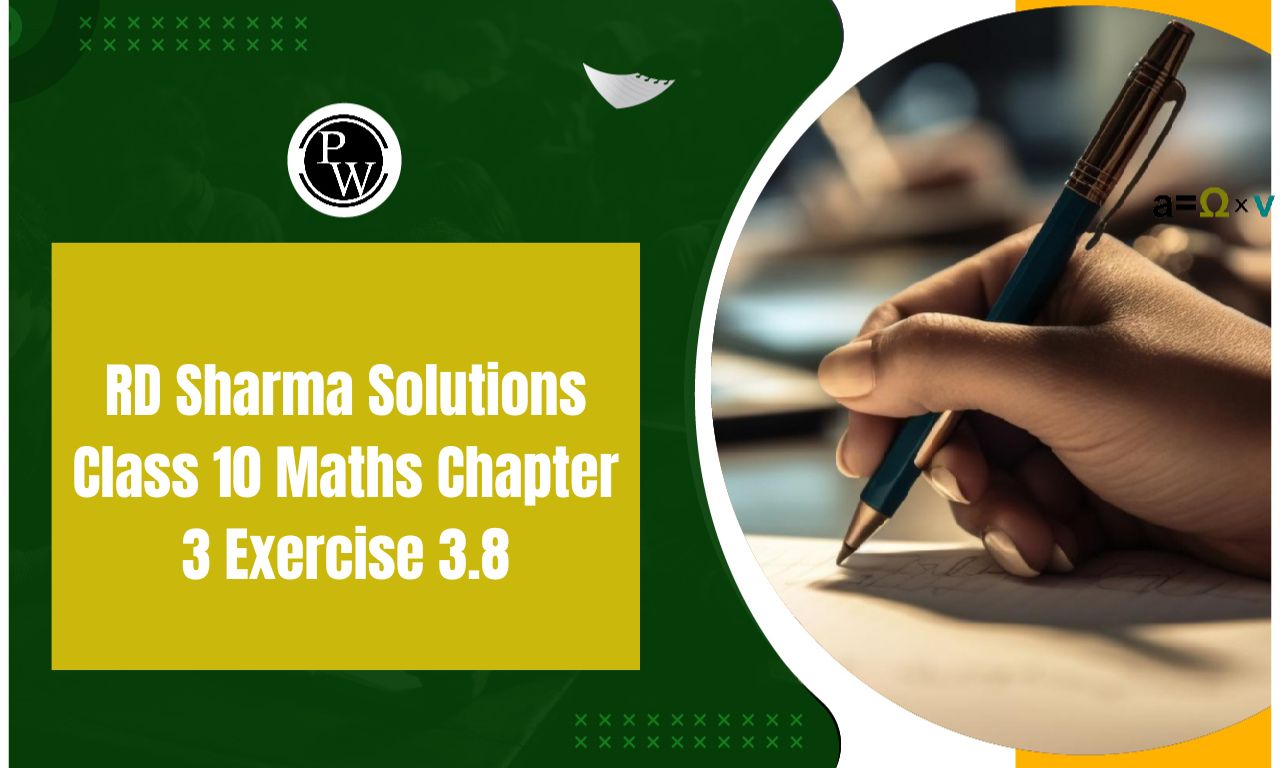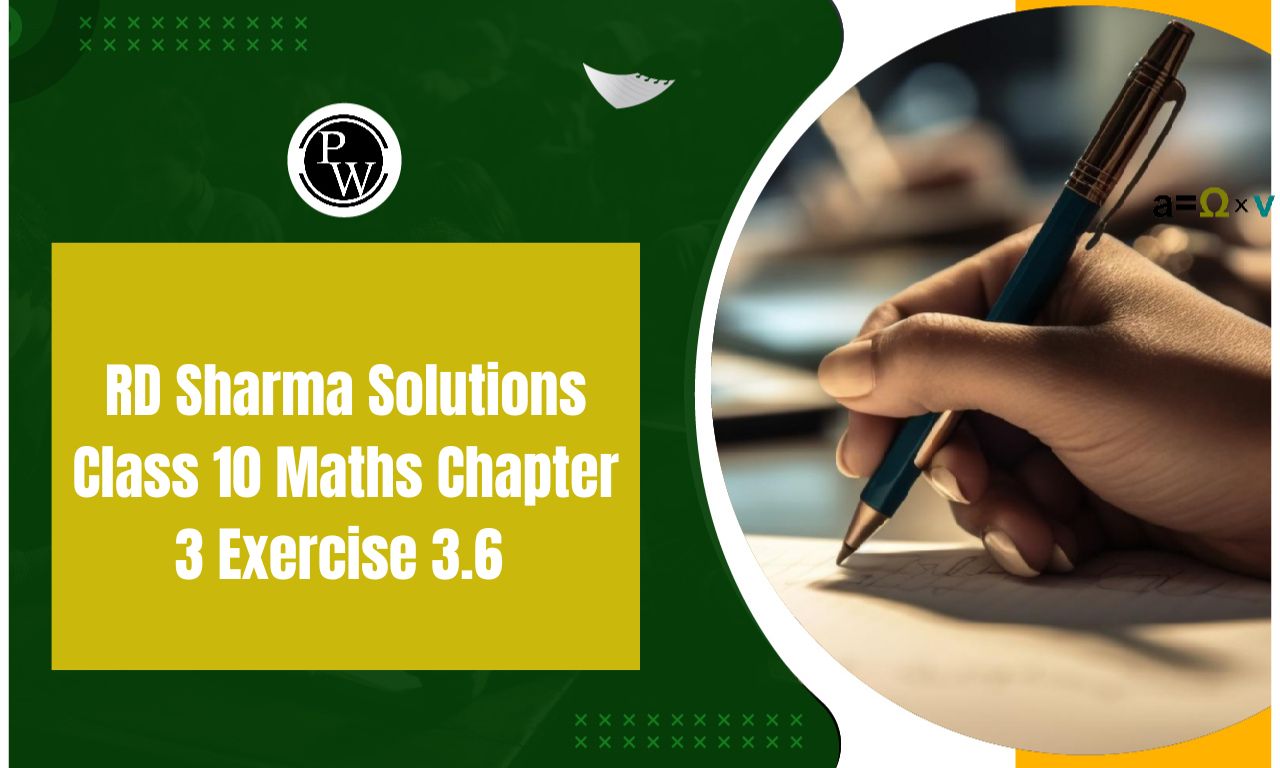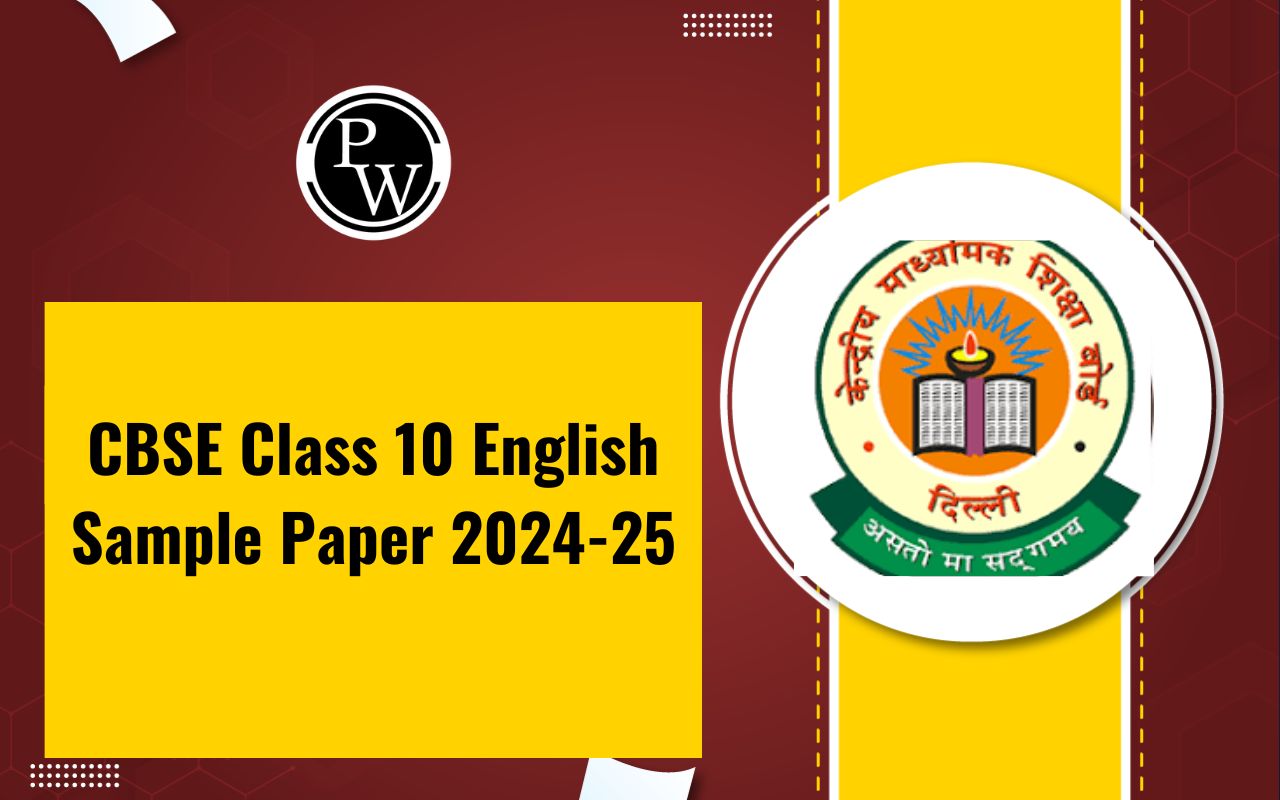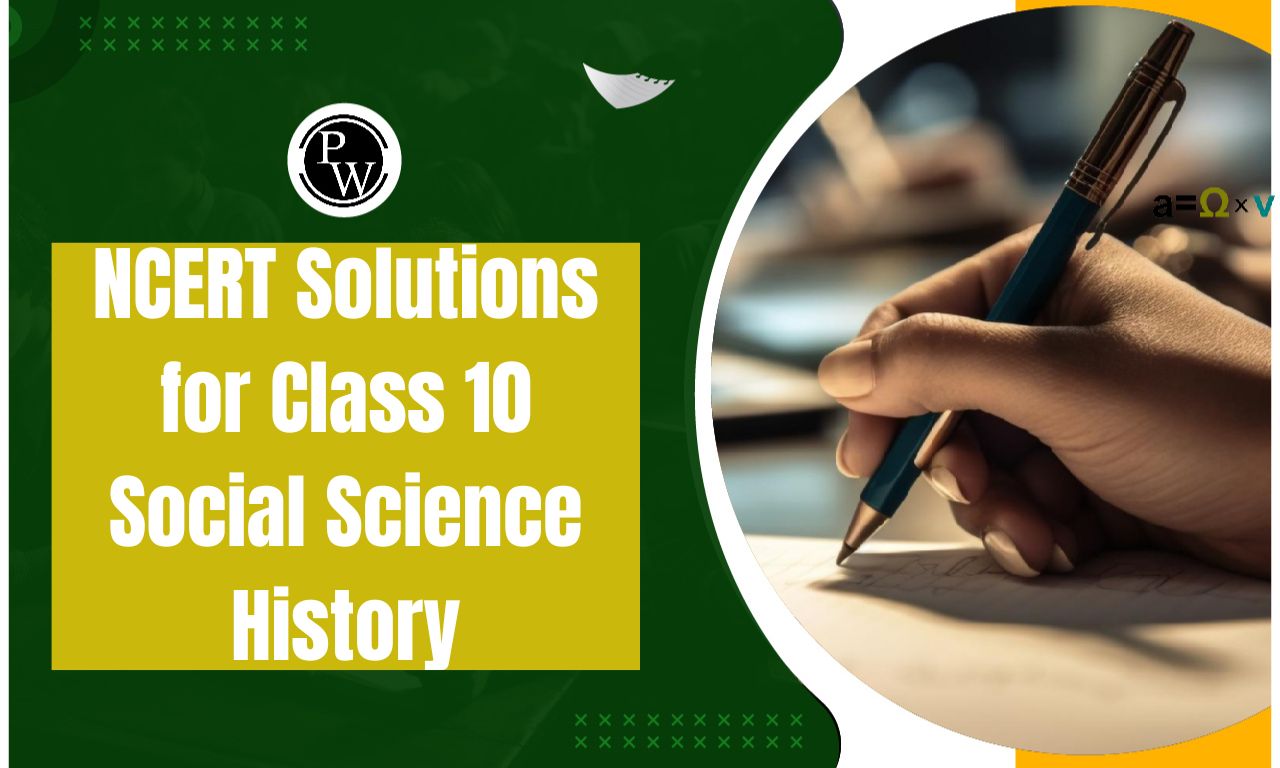
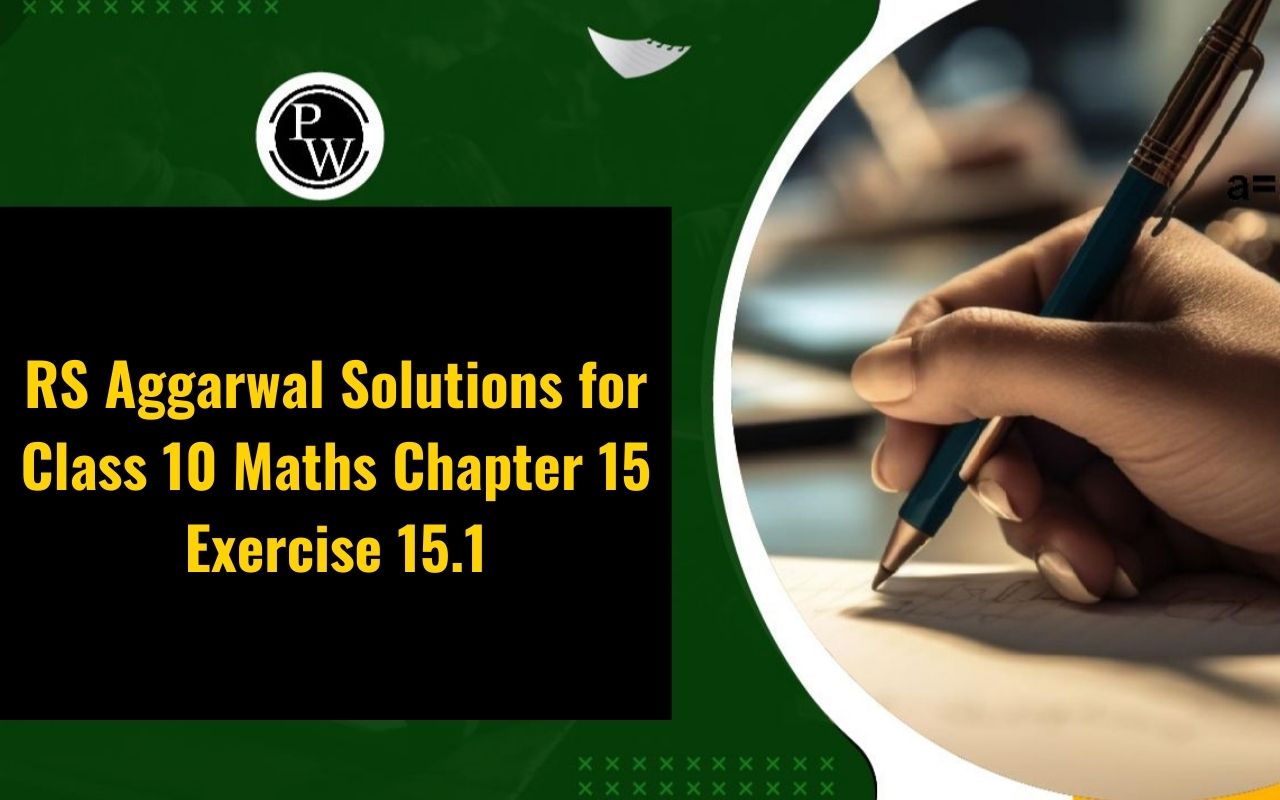
RS Aggarwal Solutions for Class 10 Maths Chapter 15 Exercise 15.1: RS Aggarwal Solutions for Class 10 Maths Chapter 15 Exercise 15.1 provide a detailed approach to solving problems related to probability.
This exercise focuses on fundamental probability concepts, including calculating the likelihood of single events and understanding basic probability principles. The solutions are presented with step-by-step explanations, helping students grasp how to apply probability formulas and concepts effectively. By working through Exercise 15.1, students can build a solid foundation in probability, improve their problem-solving skills, and prepare for more advanced topics and exams.RS Aggarwal Solutions for Class 10 Maths Chapter 15 Exercise 15.1 Overview
RS Aggarwal Solutions for Class 10 Maths Chapter 15 Exercise 15.1 have been prepared by subject experts from Physics Wallah. This section helps students learn the basics of probability, such as how to calculate the chance of single events happening. The solutions are explained step-by-step, making it easier for students to understand and apply probability formulas. Using these solutions students can improve their understanding of probability, practice solving problems and get ready for their exams.RS Aggarwal Solutions for Class 10 Maths Chapter 15 Exercise 15.1 PDF
The PDF link for RS Aggarwal Solutions for Class 10 Maths Chapter 15 Exercise 15.1 is available below. By using this PDF, students can enhance their understanding of probability, practice with real problems, and prepare thoroughly for their exams.RS Aggarwal Solutions for Class 10 Maths Chapter 15 Exercise 15.1 PDF
RS Aggarwal Solutions for Class 10 Maths Chapter 15 Exercise 15.1
Below we have provided RS Aggarwal Solutions for Class 10 Maths Chapter 15 Exercise 15.1 for the ease of the students – Q. A coin is tossed once. What is the probability of getting tail?
Solution:
Total number of outcomes = 2 i.e head and tail
favourable outcomes = 1 i.e. tail
probability =
1
2
Solution:
If we say that the coin is fair. Then getting a head or a tail have equal probabilities. So, P(H)=P(T)=1/2
Now, P(at most 1 head)=P(getting 0 heads or 1 head) = P(0 heads) + P(1 head) = P(T)*P(T)+P(H)*P(T)+P(T)*P(H)=
3/4
getting at least 1 head:
Let E 6 = event of getting at least 1 head. Then, E 6 = {HT, TH, HH} and, therefore, n(E 6 ) = 3. Therefore, P(getting at least 1 head) = P(E 6 ) = n(E 6 )/n(S) = ¾. exactly 1 head E = event of getting 1 head = {HT , TH} = 2 p(getting 1 head) = 2/4 = 1/2
Solution:
A die can have outcomes as {1,2,3,4,5,6}
Total outcomes =6
(i) an even no.
{2,4,6}=3
We know that PROBABILITY = Number of favorable event / Total number of event=3/6=1/2
so, probability of an even number is 1/2.
(ii) number less than 5
{1,2,3,4}=4
We know that PROBABILITY = Number of favorable event / Total number of event=4/6=2/3
probability of number less than 5 is 2/3
(iii) number greater than 2
{3,4,5,6}=4
probability =4/6=2/3
(iv) number between 3 and 6
{4,5}=2
probability =2/6=1/3
(v) number other than 3
{1,2,4,5,6}=5
probability =5/6
(vi) Number 5
{5}=1
probability =1/6
Q.
There are 35 students in a class of whom 20 are boys and 15 are girls. From these students one is chosen at random. What is the probability that the chosen student is a (i) boy, (ii) girl?
Solution:
Total number of students = 35
Number of boys = 20
Number of girls = 15
(i) Let E1 be the event that the chosen student is a boy.
Therefore, P(choosing a boy) = P(E1) = Number of outcomes favorable to E1/Number of all possible outcomes = 20/35= 4/7
Thus, the probability that the chosen student is a boy is 4/7.
(ii) Let E2 be the event that the chosen student is a girl.
Therefore,
P(choosing a girl) = P(E2) = Number of outcomes favorable to E2 / Number of all possible outcomes
= 15/35 = 3/7
Thus, the probability that the chosen student is a girl is 3/7.
Q.
In a lottery there are 10 prizes and 25 blanks. What is the probability of getting a prize?
Solution:
In a lottery prizes are 10.
And blanks are 25.Total number of outcomes possible=>n(S) = 10 + 25 = 35Total number of prizes, n(E) = 10So,
p(E)=n(E)/n(S)
=10/35
=2/7
the probability of price is 2/7.
Q.
17 cards numbered 1, 2, 3, 4, ... 17 are put in a box and mixed throughly. A card is drawn at random from the box. Find the probability that the card drawn bears (i) an odd number (ii) a number divisible by 5.
Solution:
All outcomes are 1,2,3,4.........,17
Number of all possible outcomes = 17
(1) Let E be the event that the number on the drawn card is an odd number.
The favourable outcomes are 1,3,5,7,9,11,13,15,17
Number of all favourable outcomes = 9
P(getting an odd number ) =
 (2) possible outcomes = 17
Favourable outcomes are 5,10,15
Number of favourable outcomes = 3
P(. getting a number divisible by 5) =
(2) possible outcomes = 17
Favourable outcomes are 5,10,15
Number of favourable outcomes = 3
P(. getting a number divisible by 5) =

Q.
In a family of 3 children, find the probability of having at least one boy.
Solution:
The probability that each child will be a boy is 1/2.
The probability that each child will be a girl is 1/2.
The probability of no. boys = 1/2 × 1/2 × 1/2 = 1/8
The probability of at least 1 boy = 1 - the probability of no boys.
= 1 - 1/8 = 7/8
or
The number of the possibilities is shown below
Probability of 0 boys = 1/8
Probability of 1 boy = 3 × 1/8 = 3/8
Probability of 2 boys = 3 × 1/8 = 3/8
Probability of 3 boys = 1/8
The probability of at least 1 boy is equal to the probability of 1 or 2 or 3
boys which = 3/8 + 3/8 + 1/8 = 7/8.
Q.
A bag contains 4 white balls, 5 red balls, 2 black balls and 4 green balls.
A ball is drawn at random from the bag. Find the probability that it is (i) black, (ii) not green, (iii) red or white, (iv) neither red nor green.
Solution:
S = {4 white, 5 red, 2 black, 4 green balls}
n
(
s
)
=
15
ii) Let
E
1
denote the event of getting a ball other than green.
n
(
E
1
)
=
11
P
(
E
1
)
=
n
(
E
1
)
n
(
s
)
P
(
E
1
)
=
11
15
iii) Let
E
2
denote the event of getting a red or white ball.
n
(
E
2
)
=
9
P
(
E
2
)
=
n
(
E
2
)
n
(
s
)
P
(
E
2
)
=
9
15
=
3
5
i) Let
E
3
denote the event of getting a black ball.
n
(
E
3
)
=
2
P
(
E
3
)
=
n
(
E
3
)
n
(
s
)
P
(
E
3
)
=
2
15
iv) Let
E
4
denote the event of getting neither red nor green ball.
n
(
E
4
)
=
6
P
(
E
4
)
=
n
(
E
4
)
n
(
s
)
P
(
E
4
)
=
6
15
=
2
5
Q.
A card is drawn at random from a well shuffled pack of 52 cards. Find the probability of getting (i) a red king, (ii) a queen or a jack.
Solution:
In a pack of cards their are 52 cards.
In 52 cards their are 26 black and 26 red cards.
In one set their are 13 cards (2, 3, 4, 5, 6, 7, 8, 9, 10, jack, queen, king & ace)
(i). P(red king) = no of red king / no of total cards
P(red king) = 2 / 52
= 1 / 26
(ii). P(queen or jack) = (number of queen is 4 + number of jacks are 4)/ total number of cards
P(queen or jack) = (4 + 4) / 52
= 8 / 52
= 2 / 13.
Q.
Two different dice are tossed together. Find he probability that (i) the number on each die is even, (ii) the sum of the numbers appearing on the two dice is 5.
Solution:
Let S be the sample space
If two dice are rolled then n(S) = 6
2
= 36
A be the event of getting the number in each die is even then
n(A) = { (2,2),(2,4),(2,6),(4,2),(4,4),(4,6),(6,2),(6,4),(6,6) } = 9
P
(
A
)
=
n
(
A
)
n
(
S
)
=
9
36
=
1
4
B be the event of getting sum of the numbers appearing on two dice is 5 then
n(B) = { (1,4),(2,3),(3,2),(4,1) } = 4
P
(
B
)
=
n
(
B
)
n
(
S
)
=
4
36
=
1
9
Q.
A game of chance consists of spinning an arrow which is equally likely to come to rest pointing to one of the numbers
1
,
2
,
3
,
.
.
.
,
12
as shown in the figure. What is the probability that it will point to
(i)
6
?
(ii) an even number?
(iii) a prime number ?
(iv) a number which is a multiple of
5
?


Solution:
Total number of outcomes
=
12
(i) Favourable outcome:
6
No. of favourable outcomes
=
1
∴
P
(Getting
6
)
=
1
12
(ii) Favourable outcomes:
2
,
4
,
6
,
8
,
10
,
12
No. of favourable outcomes
=
6
∴
P
(Getting even number)
=
6
12
=
1
2
(iii) Favourable outcome:
2
,
3
,
5
,
7
,
11
No. of favourable outcomes
=
11
∴
P
(Getting a prime number)
=
5
12
(iv) Favourable outcome:
5
,
10
No. of favourable outcomes
=
2
∴
P
(Getting a multiple of
5
)
=
2
12
=
1
6
Q.
A lot consists of 144 ballpoint pens of which 20 are defective and others good. Tanvy will buy a pen if it is good, but will not buy it if it is defective. The shopkeeper draws one pen at random and gives it to her.
What is the probability that (i) she will buy it, (ii) she will not buy it?
Solution:
Given that total number of pens n(S) = 144.
Given that total number of defective pens = 20.
That means total number of non-defective pens = 144 - 20
= 124.
(1) She will buy:
Let A be event that she will buy a non-defective pen
n(A) = .124.
Therefore the required probability P(A) = n(A)/n(S)
= 124/144
= 31/36.
(2) She will not buy it.
Let B be the event that of getting a defective pen.
n(B) = 20.
Therefore the required probability P(B) = n(B)/n(S)
= 20/144
= 5/36.
Q.
A box contains 90 disces which are numbered from 1 to 90. If one disc is drawn at random from the box, find rthe probability that it bears (i) a two-digit number, (ii) a perfect square number, (iii) a number divisible by 5.
Solution:
1. number of favourable outcomes = 90 - 9 =81
Probability=
81
90
=
9
10
2. number of favourable outcomes = {1,4,9,16,25,36,49,64,81} = 9
Probability =
9
90
=
1
10
3. number of favourable outcomes ={5,15,20,25,30,35,40,45,50,55,60,65,70,75,80,85,90}
P =
18
90
=
1
5
Q.
(i) A lot of 20 bulbs contain 4 defective ones. One bulb is drawn at random from the lot. What is the probability that this blb is defective?
(ii) Suppose the bulb drawn in (i) is not defective and not replaced Now, bulb is drawn at random from the rest. What is the probability that this bulb is not defective?
Solution:
(i) Total number of bulbs = 20
Total number of defective bulbs = 4
P (getting a defective bulb) =
n
u
m
b
e
r
o
f
f
a
v
o
u
r
a
b
l
e
o
u
t
c
o
m
e
s
t
o
t
a
l
n
u
m
b
e
r
o
f
o
u
t
c
o
m
e
s
=
4
20
=
1
5
(ii) Remaining total number of bulbs = 19
Remaining total number of non-defective bulbs = 16 − 1 = 15
P (getting a not defective bulb)=
15
19
Q.
One card is drawn from a well- shuffled deck of 52 cards. Find the probability of drawing
(i) an ace (ii) a '4' of spades
(iii) a '9' of a black suit (iv) a red king.
Solution:
One card is drawn from a well- shuffled deck of 52 cards
i) favourable outcomes = 4
probability =
4
52
=
1
13
ii) favorable outcome = 1
probability =
1
52
iii) favourable outcomes = 2
probability =
2
52
= probability =
1
26
iv)favourable outcomes = 2
probability =
2
52
= probability =
1
26
Benefits of RS Aggarwal Solutions for Class 10 Maths Chapter 15 Exercise 15.1
- Clear Understanding: The solutions provide detailed step-by-step explanations that help students grasp the fundamental concepts of probability making it easier to understand how to calculate the likelihood of different events.
- Enhanced Problem-Solving Skills: By working through the exercises and solutions students improve their ability to solve various probability problems which strengthens their overall mathematical skills.
- Effective Exam Preparation: The solutions cover important probability concepts and types of questions that are commonly found in exams, helping students prepare thoroughly and perform better in their board exams.
- Concept Reinforcement: The exercise helps reinforce key probability principles, ensuring that students have a solid understanding of the subject matter and are able to apply these principles effectively.
- Expert Guidance: Prepared by subject experts, these solutions ensure accuracy and reliability, providing students with trusted resources for learning and practicing probability.
- Confidence Building: With clear explanations and practice problems, students can build their confidence in handling probability questions, reducing exam-related anxiety.
RS Aggarwal Solutions for Class 10 Maths Chapter 15 Exercise 15.1 FAQs
How can the solutions help in understanding probability?
The solutions provide step-by-step explanations for each problem, making it easier to understand how to apply probability formulas and concepts.
How do I use these solutions effectively?
To use these solutions effectively review the detailed explanations, practice similar problems, and ensure you understand each step of the solution process.
Are there any tips for solving probability problems?
Focus on understanding the key concepts such as favorable outcomes, total possible outcomes, and the basic probability formula. Practice regularly to build your skills and confidence.
Can these solutions help with board exam preparation?
Yes, the solutions cover essential probability concepts that are commonly tested in board exams, helping you prepare effectively by practicing with similar types of questions.
🔥 Trending Blogs
Talk to a counsellorHave doubts? Our support team will be happy to assist you!

Check out these Related Articles
Free Learning Resources
PW Books
Notes (Class 10-12)
PW Study Materials
Notes (Class 6-9)
Ncert Solutions
Govt Exams
Class 6th to 12th Online Courses
Govt Job Exams Courses
UPSC Coaching
Defence Exam Coaching
Gate Exam Coaching
Other Exams
Know about Physics Wallah
Physics Wallah is an Indian edtech platform that provides accessible & comprehensive learning experiences to students from Class 6th to postgraduate level. We also provide extensive NCERT solutions, sample paper, NEET, JEE Mains, BITSAT previous year papers & more such resources to students. Physics Wallah also caters to over 3.5 million registered students and over 78 lakh+ Youtube subscribers with 4.8 rating on its app.
We Stand Out because
We provide students with intensive courses with India’s qualified & experienced faculties & mentors. PW strives to make the learning experience comprehensive and accessible for students of all sections of society. We believe in empowering every single student who couldn't dream of a good career in engineering and medical field earlier.
Our Key Focus Areas
Physics Wallah's main focus is to make the learning experience as economical as possible for all students. With our affordable courses like Lakshya, Udaan and Arjuna and many others, we have been able to provide a platform for lakhs of aspirants. From providing Chemistry, Maths, Physics formula to giving e-books of eminent authors like RD Sharma, RS Aggarwal and Lakhmir Singh, PW focuses on every single student's need for preparation.
What Makes Us Different
Physics Wallah strives to develop a comprehensive pedagogical structure for students, where they get a state-of-the-art learning experience with study material and resources. Apart from catering students preparing for JEE Mains and NEET, PW also provides study material for each state board like Uttar Pradesh, Bihar, and others
Copyright © 2025 Physicswallah Limited All rights reserved.
